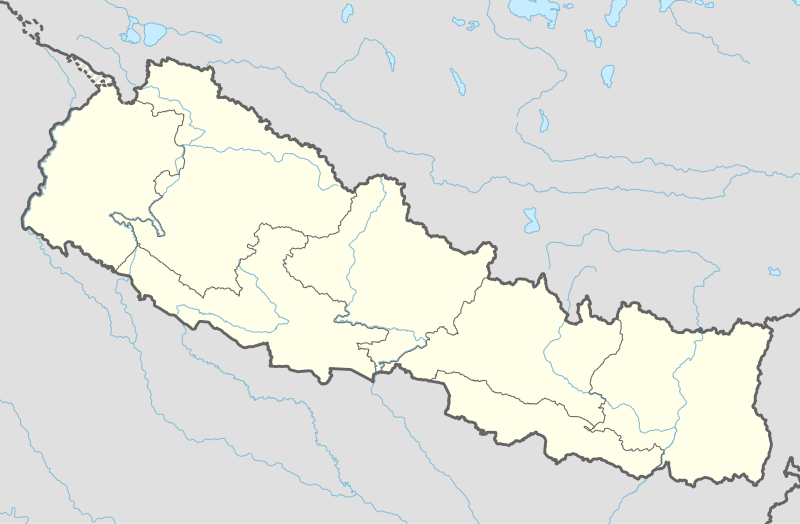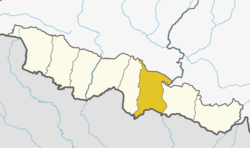Basahiya
Basahiya is a 24-ward Janakpur sub-metropolitan city in the Dhanusha District of the Janakpur Zone of south-eastern Nepal. At the time of the 1991 Nepal census it had a population of 4,542 and had 737 houses. Basahiya has four government schools, three of which are primary schools, and the fourth of which is a higher secondary school. The majority of the people are Hindus; some are Muslims. Their native language is Maithili. Moderate climate exists in this area and lands are suitable for agriculture. There is one health post and one Animal Hospital in Basahiya.[1]
Basahiya बसहिया | |
|---|---|
Ward no. 24 of Janakpur of sub metropolitan city | |
 Basahiya Location in Nepal | |
| Coordinates: 26.70°N 85.91°E | |
| Country | |
| Zone | Janakpur Zone |
| District Dhanusha | Dhanusa District |
| Government | |
| Population (1991) | |
| • Total | 4,487 |
| Time zone | UTC+5:45 (Nepal Time) |
| Website | https://mobile.twitter.com/account# |
History
The name Basahiya is taken from the Hindu marriage customs of Basgari which is related with the marriage of Lord Sita's basgari. There is a belief among locals that a sadhu made this village who had placed their 'kutti' at the auspicious Balthara Pond. The relatives of the sadhu's are still present in the village. They worship their ancestor every year in Balthara Pond. A sculpture which was of Baal Bhagwan (child Krishna) worshiped by sadhu was found there but was later taken by the government because it was believed to be made of precious metals. There is also evidence which proves balthra as the 1st human habitant site of this village as the ancient historical guthi of basahiya was also named behind this auspicious balthara pound as balthara birtha guthi in the tama patra of बसहिया मंठ. Although it is the 1st human habitant site of this village, in the meantime, there was no any human residence there. But credit goes to villagers Shree subedan Mandal, Ram Shrestha Mandal, Ram Ekwal sahani, Madan Sahani that they choose this historical site as their residence with pride at present time.
Ancient historical personalities
- Gogal Prasad Sharma
- Bathu Raut
- Dukha Prasad Sharma
- Anuthi Prasad Sharma
- Mohit Mandal
- Ram Baran Sahani
- Laxmi Sah
- Kuldip Yadav
- Mahendra Sharma
- Santolia Sada
- Rajendra Mandal
- Baiju Mandal (nickname Lala)
- Majhi Mahto
References
- "Nepal Census 2001". Nepal's Village Development Committees. Digital Himalaya. Archived from the original on 12 October 2008. Retrieved 2008-08-31.
